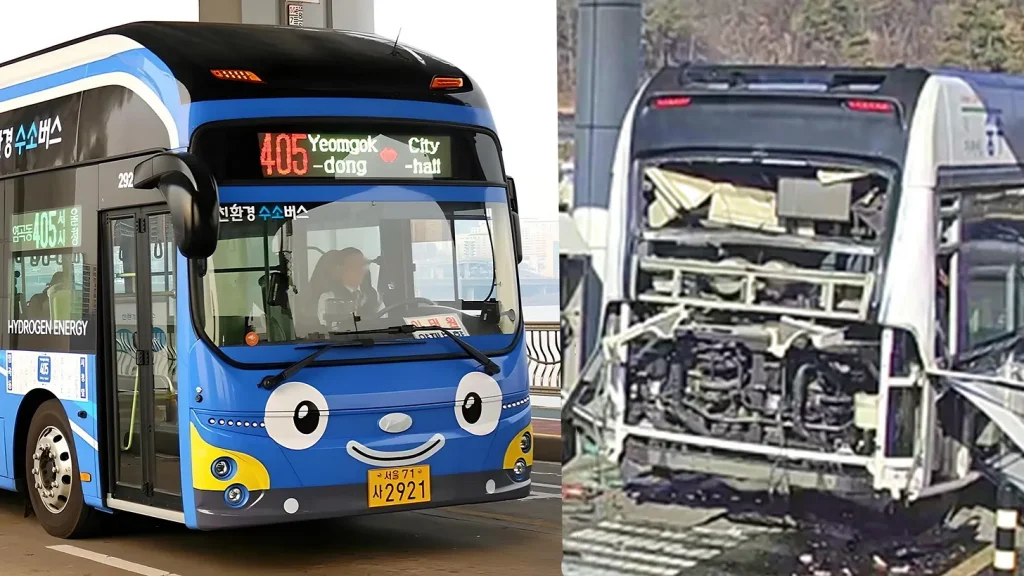
Article by Nick Cater
24.05.2025

In September, the South Korean government decreed that 25 per cent of its metropolitan bus fleet would be powered by hydrogen by the decade’s end.
Three months later, a hydrogen-fuelled bus exploded, sending debris into the face of a refuelling station attendant in the city of Chungju and injuring two innocent passers-by.
This week, Hyundai recalled all 1269 hydrogen buses operating in the country pending a safety review.
The story received little coverage in Australia outside the pay-walled industry publication Hydrogen Insight. Yet it matters. It exposes the harsh truth: no amount of political will can force an immature technology to behave as promised.
Green hydrogen is vital to the government’s plan for net-zero emissions by 2050. In October, Chris Bowen set a target of producing a million tonnes of green hydrogen by the end of the decade, earmarking $8 billion in subsidies to achieve that goal.
That won’t happen, no matter how much borrowed money the government might throw at it. In Europe, EU member countries are scaling back their expectations and preparing to renege on their obligation under the European Union’s Renewable Energy Directive, which set a target of 42% green hydrogen usage in industry by 2030.
In a Facebook post, Norwegian cabinet minister Ola Borten Moe admitted that the technology was “light years away from being justifiable or sensible”.
Earlier this month, Europe’s largest renewable-energy producer, Statkraft, announced that it would stop investing in green hydrogen. The Norwegian company cited rising technology costs in its latest quarterly report, particularly in hydrogen and offshore wind.
Yet Bowen’s vision of a clean, green future relies heavily on offshore wind linked to tree hydrogen production. Which begs the question: What does Bowen know that European governments and renewable energy corporations don’t?
Why would the nascent technology jump to his command any more than it would to a direction from the EU?
Last week, Bowen claimed that the government had a mandate for its energy policy and that Australia was on track to hit his 2030 target of a 34 per cent reduction in emissions relative to 2005.
Labor’s campaign director, Paul Erickson, repeated this week that emissions had been reduced under Labor thanks to the introduction of renewable energy.
The numbers tell a different story. The Australian National Greenhouse Accounts, the audited balance sheet of the nation’s emissions, shows that Australia’s emissions have flatlined over the last two years, at around 29 per cent below the 2005 level. It may be a lagging indicator, but it stretches the limits of imagination to see how the lost ground can be recaptured in a mere five years.
The scale of Labor’s ambition set out in the parameters of the Australian Energy Market Operator’s 2022 Integrated System Plan is breathtaking. Achieving Bowen’s targets would require retiring 60 per cent of coal generators by 2030, reducing capacity from 23GW to just 9GW.
Yet the actual reduction in coal generation over the last three years is marginal at best. The Eraring Power station in NSW, which was supposed to close a year ago, is being kept alive until 2027 with support from the NSW Government.
AEMO’s real-time electricity production dashboard records that coal has produced 73 per cent of electricity in NSW over the last 12 months, 81 per cent in Queensland, and 67 per cent in Victoria.
Yet Bowen insists we’re on track for an electricity grid powered by 82 per cent clean energy by 2030.
The federal election should have prompted a vigorous debate about the precarious state of Australia’s energy market. Yet there was none, thanks to the distraction of the Coalition’s strategically flawed nuclear plan and Anthony Albanese’s ruthless campaign to mislead the public about the cost.
Seldom was Albanese put on the spot and asked to reveal the cost of its weather-dependent energy system or whether it could actually be completed, given the many setbacks it has encountered.
Instead, Bowen has given us little more than green energy happy talk, a fantasy of outlandish proportions that insults our intelligence.
He is preparing to deliver an even more ambitious target for 2035 despite the lack of credible means of meeting the existing target.
The Liberal Party’s decision to commit to Zero 2050 meant it was also committed to a promise it did not know how to keep. Peter Dutton deserves credit for breaking the nuclear taboo despite his inability to make a persuasive case for its adoption.